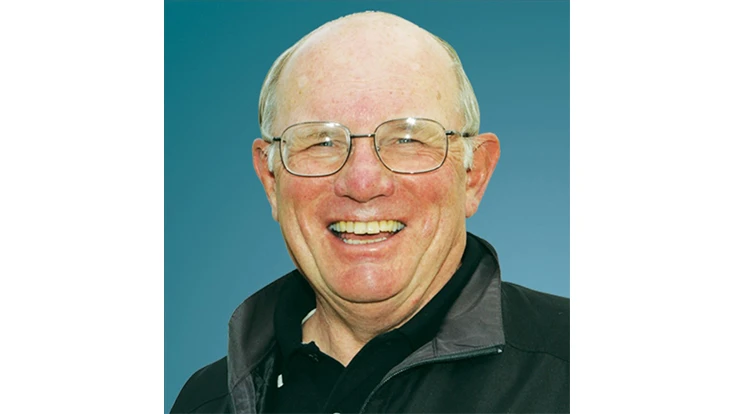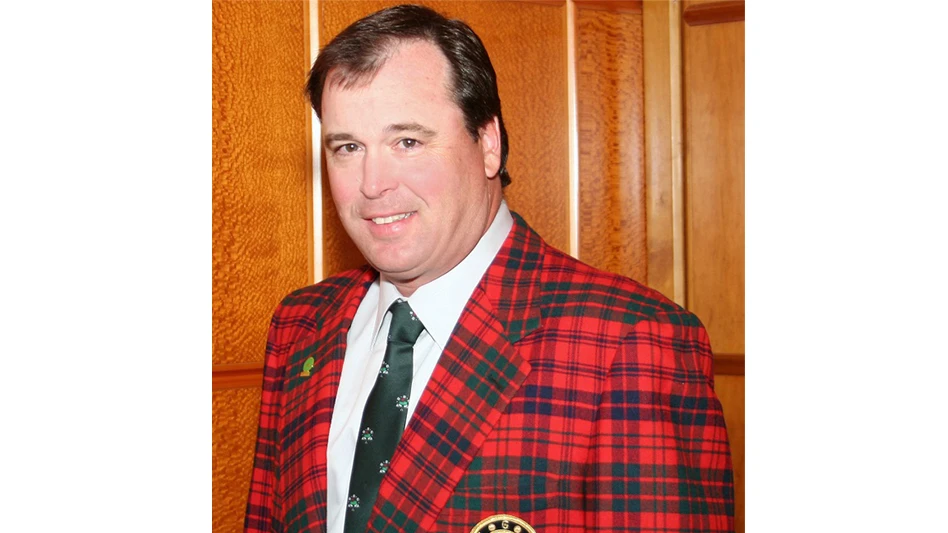
 Monroe Miller Monroe Miller |
We hadn’t seen the Northeast fall foliage for a couple of years, so Cheryl and I decided this was the year to return. The timing was perfect. The best fall color, on average, is around Columbus Day, so the day after the Wisconsin Turfgrass Association golf fundraiser we headed east. There are so many things to see on the way that it took considerable discipline to keep moving to arrive at the Chautauqua Institution in New York the first night. We stayed right on the grounds and it was beautiful. We made a late-afternoon visit to their golf course; Donald Ross designed one nine many years ago. From there it was on to Ithaca and a stop to see Frank and Barb Rossi’s new farm. Frank is burning the candle at both ends these days; he is teaching undergrads the introductory horticulture course. “Now he thinks he knows everything about fruits and veggies, not just turf,” Barb lamented. We had a good laugh, but she probably is right. I don’t think I have ever seen New England’s fall color more beautiful. Around every corner and over every hill was a vista more beautiful than the last. I called Pete Salinetti to get caught up with him. We first became acquainted at the very first Toro Professionals event many years ago. Pete and Mike Vogt were the first two individuals to earn certified status in both the GCSAA and the CMAA. Pete now works in sales in the Albany, N.Y., area, and he knows more about managing quality turf than just about anyone I know. We stopped at the Dellwood Cemetery in Manchester, Vt., to visit Walter Travis’ grave again. It’s near Robert Lincoln’s home in Manchester and close to the first course he designed. I have always admired Walter’s vision. Along with another golfer, he lobbied for what he called a “National Golf Farm” or a “Golf Experimental Farm.” They pushed from 1913-20 for the USGA to fill that void, and were successful when the Green Section was formed in 1920. The trip from Manchester to our next planned stop — Strafford, Vt. — was breathtaking. Strafford is a quaint, historic Vermont village, a neat ensemble of white buildings that included the quintessential New England meetinghouse — a church in modern lexicon. We traveled there to revisit the homestead of Justin Smith Morrill. Morrill is best known for sponsoring the Land Grant College Act (aka Morrill Act) in the U.S. Senate. It established funding for higher education in each of the states and was signed into law by Abraham Lincoln in 1862. Morrill was forced to leave school at age 15 to become a merchant’s clerk. He was good at it and by the time he was 38, he retired. He designed his house on the south side of the village. Morrill had an interest in landscape gardening and a visit to his homestead bears that out. Some of the plants cultivated these days were planted by Morrill. He ran for office and was a U.S. Representative from 1855–67 and a Senator from 1867–98. His legislation expanded college education to include agriculture. Anyone involved in golf turf management is most fortunate for his foresight. The law provided 30,000 acres of federal land for each member of Congress as an endowment for each land grant college. In 1890, he sponsored a bill that gave each college $25,000 annually to help operate. The site is fascinating to visit. It includes the barns, corncrib, blacksmith shop, an icehouse and other buildings. Behind the buildings is a manmade pond, which provided water and ice in the winter. Morrill’s grave is a relatively short walk north on the road past the meetinghouse. Whenever we walk up there, I consider Morrill’s humble beginnings and great vision. For turf, where would we be without the likes of Michigan State, Penn State, Ohio State, University of Rhode Island, Rutgers, N.C. State and every other land grant that has contributed science, research and education to golf turf? From Auburn University to the University of Wisconsin–Madison, we owe a debt to Sen. Morrill that we obviously can’t repay, other than by lending support to our own land grant university. When we left New England, we sort of followed the fall foliage color south until we arrived in Raleigh, N.C. Along the way, I thought about the great men who helped make America great, and Justin Smith Morrill was one of the greatest. When we returned home from our golf trip, I realized I hadn’t taken my clubs with me. What a great sport.
Monroe Miller retired after 36 years as superintendent at Blackhawk CC in Madison, Wis. He is a recipient of the 2004 USGA Green Section Award, the 2009 GCSAA Col. John Morley DSA Award, and is the only superintendent in the Wisconsin Golf Hall of Fame. Reach him at groots@charter.net. |

Explore the January 2015 Issue
Check out more from this issue and find your next story to read.
Latest from Golf Course Industry
- Tubac’s Rancho 9 re-opens after greens renovation
- Future Leaders Academy set for Jan. 23 in suburban Pittsburgh
- 54, Turfgrass set to manage Druids Glen, Curracloe Links
- Nufarm introducing new products in San Diego
- Envu Superintendent Grant Program sending 10 members to 2025 GCSAA show
- Editor’s notebook: Let’s chat about AI
- Wonderful Women of Golf 43: Melissa Gugliotti
- This month on Superintendent Radio Network: December 2024





